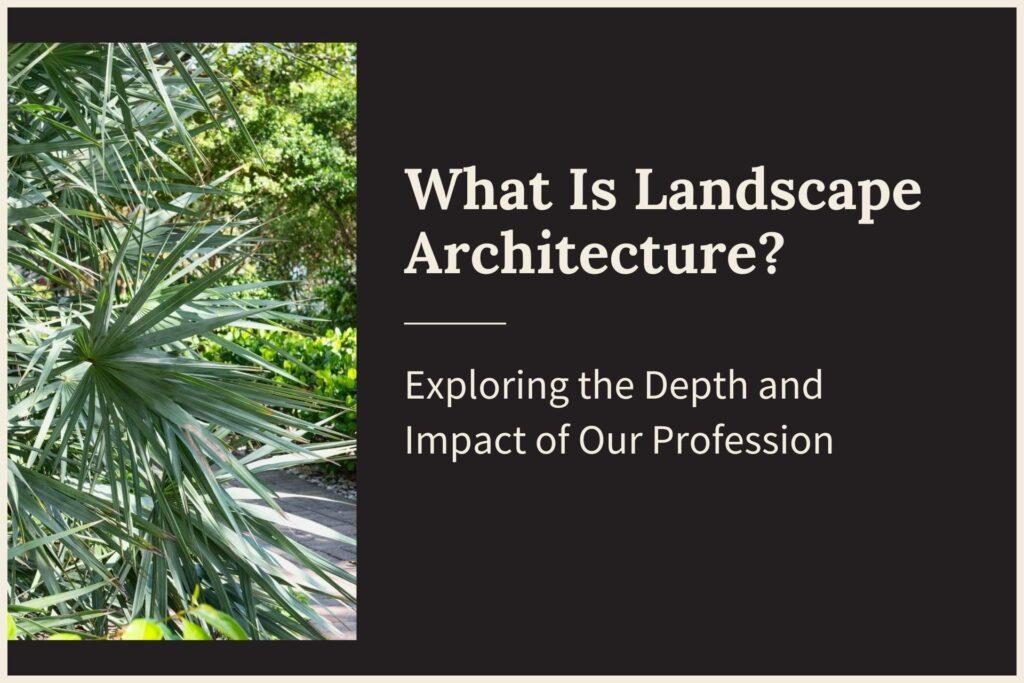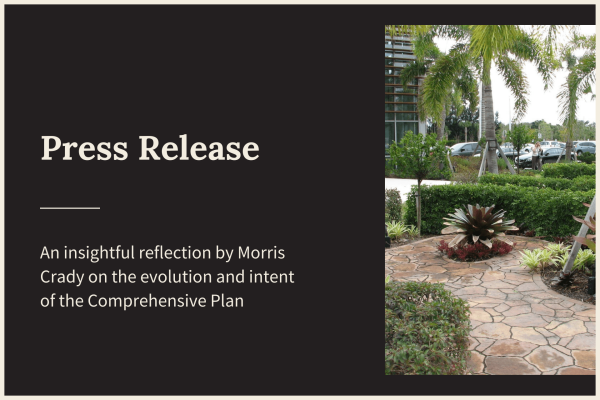Introduction
When you hear the term “landscape architect,” what comes to mind? For many, it conjures images of someone planting trees, designing flower beds, or maintaining a lawn. While these roles are valuable, they barely scratch the surface of what landscape architecture truly encompasses.
At its core, landscape architecture is the art and science of designing spaces that balance human needs with the natural environment. It’s about creating systems and places that are functional, sustainable, and deeply connected to the people who use them. From designing community parks and restoring ecosystems to planning urban infrastructure and leading multi-disciplinary teams, landscape architects play a pivotal role in shaping the world we live in.
This blog post answers the question, “What is landscape architecture?” by exploring its breadth, its impact on communities and environments, and why it’s a profession you’ve likely benefited from without even realizing it.
Defining Landscape Architecture
Landscape architecture is a multidisciplinary field that blends design, science, and planning to create meaningful spaces. It’s not limited to aesthetics or horticulture; it’s about creating places that serve a purpose, whether that’s a thriving public park, a stormwater management system, or a master-planned community.
At its essence, landscape architecture combines three key elements:
- Art: Designing spaces that are beautiful, creative, and inspiring.
- Science: Using ecological principles to address environmental challenges and integrate sustainability.
- Planning: Balancing practical needs, like infrastructure and community use, with long-term resilience and harmony.
The Broad Reach of Landscape Architecture
The profession is often described as “a mile wide and an inch deep.” This phrase highlights its vast range, where professionals touch on disciplines like architecture, ecology, urban planning, and environmental science.
A typical landscape architect might work on:
- Public spaces like parks and plazas.
- Sustainable developments incorporating green infrastructure.
- Ecological restoration projects.
- Urban wayfinding systems that guide and connect.
- Master-planned communities that balance housing, recreation, and nature.
This breadth of work offers unmatched variety, allowing professionals to address challenges from multiple perspectives. Some landscape architects choose to specialize in one area—such as stormwater management or sustainable design—while others embrace the field’s diversity, working across disciplines.
At Lucido & Associates, we thrive on this dynamic range. Whether we’re designing a serene natural space or collaborating on a large-scale urban project, our work is a testament to the endless possibilities of landscape architecture.
How Landscape Architects Lead the Way
What truly sets landscape architects apart is their leadership role. Far from working in isolation, they often lead interdisciplinary teams that include architects, engineers, environmental specialists, and urban planners.
Their training uniquely equips them to:
- See the big picture while managing the finer details.
- Balance design with functionality, sustainability, and community needs.
- Integrate diverse perspectives into cohesive, impactful plans.
This leadership extends beyond technical expertise. Landscape architects engage with stakeholders, communities, and decision-makers to ensure the spaces they create serve everyone’s needs. They are the bridge between disciplines, guiding projects toward solutions that are innovative, practical, and enduring.
The People-Centered Approach
At its heart, landscape architecture is about people. The spaces landscape architects create are meant to serve communities by enhancing their quality of life. Whether it’s a bustling city plaza, a serene walking trail, or a resilient urban development, the goal is always to design spaces that bring people together, foster connections, and meet real-world needs.
Landscape architects also prioritize listening to those who will use the spaces they design. Community input is a critical part of their process, ensuring the final result reflects the values and aspirations of the people it serves.
Why Isn’t Landscape Architecture More Widely Known?
Despite its importance, landscape architecture is a profession that often flies under the radar. Many students discover it by accident—while pursuing architecture, interior design, or environmental science. Rarely is it introduced in high schools as a potential career path.
Steven Garrett, Senior Partner at Lucido & Associates, reflects on this challenge: “Nearly every student I’ve spoken to had no idea what landscape architecture was until they stumbled upon it in college. It wasn’t something they were exposed to earlier.”
This lack of visibility is unfortunate because the field combines so many disciplines—art, science, design, and problem-solving—that it appeals to a wide range of interests. For students who love creativity, environmental stewardship, or community building, landscape architecture offers a meaningful and impactful career path.
Shaping Communities Through Landscape Architecture
What makes landscape architecture so essential to the spaces we live, work, and connect in? Because it shapes the spaces where we live, work, and connect. At its best, it creates environments that are:
- Functional: Spaces that meet the needs of the people who use them, whether it’s a playground, a plaza, or a stormwater system.
- Beautiful: Designs that inspire and delight, bringing artistic value to everyday life.
- Sustainable: Projects that respect and enhance the natural environment, ensuring long-term resilience.
Landscape architects address critical challenges, from urbanization and climate change to community revitalization. Their work fosters connections—not just between people and places, but also between humanity and the natural world.
What Makes Landscape Architecture Unique?
While many professions focus on individual elements of the built or natural environment, landscape architecture bridges the two. It’s a field that requires:
- A deep understanding of natural systems, like soil, water, and vegetation.
- Expertise in design principles, from aesthetics to accessibility.
- The ability to plan for long-term environmental and community resilience.
This combination of skills enables landscape architects to create spaces that are as practical as they are beautiful, as sustainable as they are inspiring.
Conclusion: Landscape Architecture as a Profession and a Purpose
Landscape architecture is about so much more than plants and pathways. It’s a transformative profession that blends creativity, science, and planning to shape spaces that balance beauty, function, and sustainability. Whether designing a serene public park, restoring a natural habitat, or leading a master-planned community, landscape architects make a lasting impact on the world around us.
At Lucido & Associates, we’re proud to be part of this dynamic and meaningful profession. We believe that great design begins with understanding people, respecting the land, and embracing the possibilities of what spaces can become.
Interested in learning more about landscape architecture or seeing how it shapes our communities? Sign up for our quarterly newsletter to stay inspired, informed, and connected. Together, we can create a brighter, more sustainable future—one space at a time.









